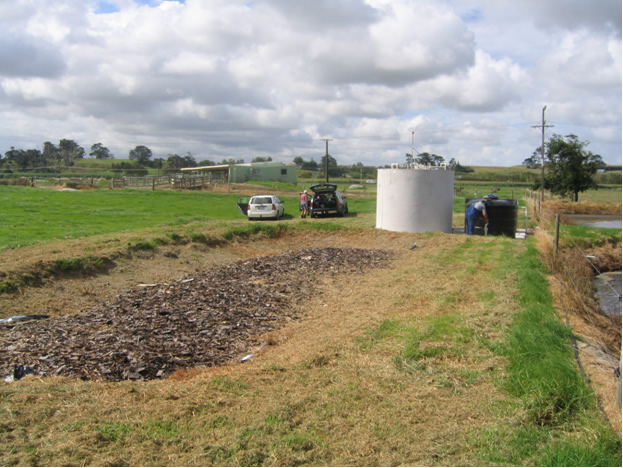Advancing constructed wetlands and denitrifying bioreactors to abate edge-of field nitrogen losses
Nitrate removal from three different effluents using large-scale denitrification beds
Situation: Denitrification beds (woodchip bioreactors) are a simple and promising technology for reducing nitrogen (N) contamination in treated effluent or agricultural drainage discharged into receiving waters. However, the efficiency of N removal in large-scale denitrification beds is an area that is still lacking data.
Actions: A field study in New Zealand by the University of Waikato and GNS Science investigated the N removal rates of three large-scale denitrification beds receiving effluent from three different treatment systems: dairy shed effluent, treated domestic effluent, and greenhouse effluent.
Take-home message: 
- Nitrogen was nearly completely removed from the dairy shed effluent and treated domestic effluent.
- Nitrogen was significantly reduced from the greenhouse effluent, but the bed was overwhelmed by high N concentrations and high flow rates.
- Nitrogen removal rates in this study were similar to those reported from smaller-scale denitrification beds.
- Denitrification beds can be an effective way to treat effluent from a variety of sources provided these effluents are pretreated to maximize nitrate concentrations.
For more information:
- Schipper, L.A., S.C. Cameron, S. Warneke. 2010. Nitrate removal from three different effluents using large-scale denitrification beds. Ecological Engineering (36): 1552-1557.
- Email Dr. Louis Schipper at schipper@waikato.ac.nz